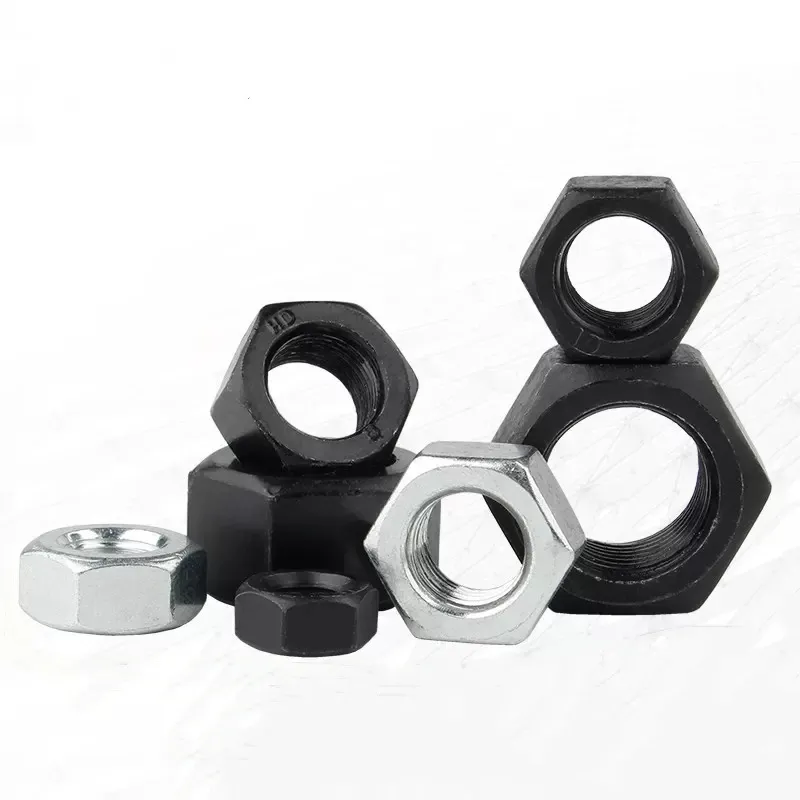

plain washer and spring washer
Okt . 12, 2024 00:13 Back to list
plain washer and spring washer
Understanding Plain Washers and Spring Washers Their Roles and Differences
When it comes to mechanical engineering and hardware applications, washers play an essential role in ensuring connections and assemblies function correctly. Among the various types of washers, two prominent types are plain washers and spring washers. Each serves a distinct purpose and is suitable for different applications, making understanding their differences crucial for engineers and DIY enthusiasts alike.
What is a Plain Washer?
A plain washer, also known as a flat washer, is a flat disc-shaped piece of metal or plastic with a hole in the center. The diameter of the hole typically matches the size of the fastener it accommodates, such as a bolt or screw. Plain washers serve multiple purposes they distribute the load of the fastener over a larger surface area, prevent wear and tear on the surface being fastened, and protect against damage due to vibration or movement.
Plain washers are primarily used in assembly applications where components may undergo significant mechanical loads. By offering a larger bearing surface, they reduce the likelihood of the fastener pulling through the material. This is particularly important in soft materials, where the fastener could easily scar or deform the surface.
What is a Spring Washer?
In contrast to plain washers, spring washers are designed to provide tension and flexibility in fastening applications. The most common type of spring washer is the split washer, which has a design that resembles a coil or a spiral. This unique shape allows the spring washer to exert a continuous force against the fastener, helping to maintain tension and grip as the assembly is subjected to vibration, thermal expansion, or contraction.
plain washer and spring washer

Spring washers are especially useful in situations where reliability is crucial, such as in automotive and aerospace applications. Their ability to absorb shock and maintain pressure helps prevent loosening of fasteners over time, which contributes significantly to the safety and longevity of mechanical assemblies.
Key Differences Between Plain Washers and Spring Washers
1. Functionality The primary function of a plain washer is load distribution, while a spring washer provides tension and prevents loosening. 2. Design Plain washers are flat and circular, whereas spring washers feature a design that incorporates a twist or coil, allowing them to act like a spring.
3. Applications Plain washers are often used in general fastening applications where load distribution is essential, while spring washers are preferred in applications where vibration or shocks can lead to loosening.
4. Material Both types of washers can be made from various materials, including steel, stainless steel, or plastic. However, spring washers are often made from spring steel or similar materials, allowing them to provide the necessary resilience and flexibility.
Conclusion
In summary, both plain and spring washers play vital roles in mechanical assemblies, each suited for specific applications. Understanding their differences allows designers and engineers to make informed choices when selecting the right type of washer for their projects. Whether aiming for enhanced load distribution with a plain washer or looking to maintain tension and prevent loosening with a spring washer, utilizing these components effectively can lead to improved performance and reliability in various mechanical systems. By paying attention to the needs of your assembly, you can ensure a long-lasting and efficient operation, minimizing the risk of mechanical failure.
Latest news
-
Premium Self Tapping Metal Screws: Strong & Easy Install
NewsAug.02,2025
-
Premium Fasteners Manufacturer | AI-Driven Solutions
NewsAug.01,2025
-
Hot Dip Galvanized Bolts - Hebei Longze | High Strength, Corrosion Resistance
NewsAug.01,2025
-
High-Strength Hot Dip Galvanized Bolts - LongZe | Corrosion Resistance, Custom Sizes
NewsAug.01,2025
-
Best Self Tapping Screws for Drywall - Fast & Secure Installation
NewsJul.31,2025
-
High-Strength Hot Dip Galvanized Bolts-Hebei Longze|Corrosion Resistance&Customization
NewsJul.31,2025

